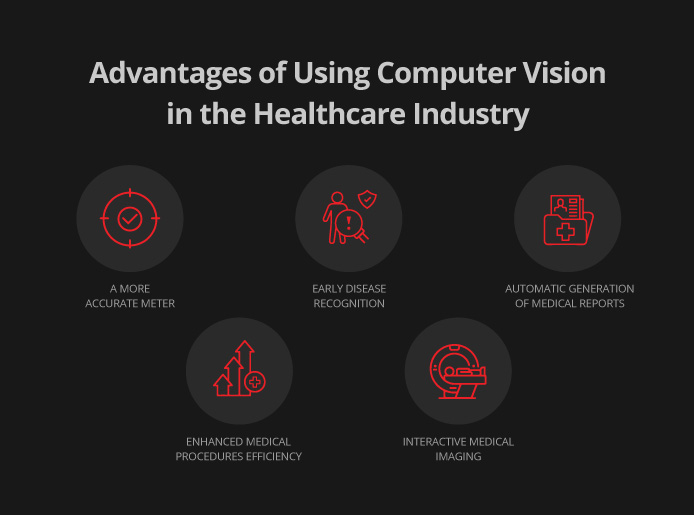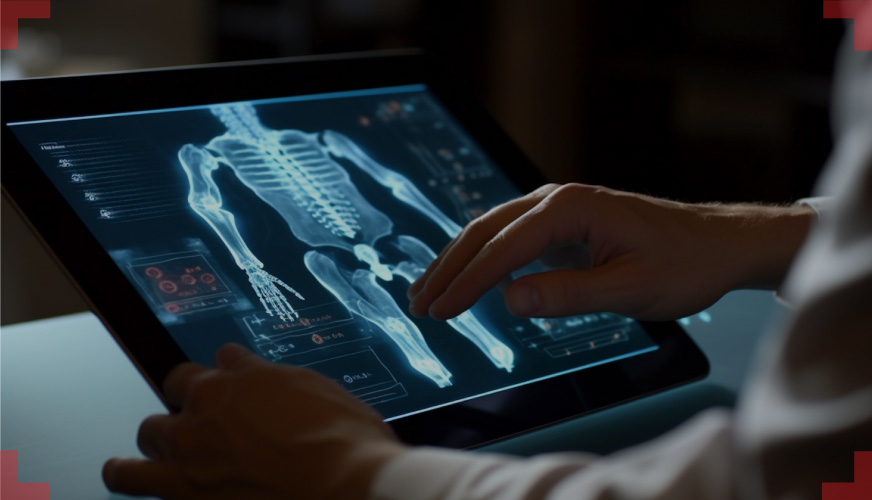Computer Vision for Medical Imaging: Revolutionizing Healthcare with AI Technology
- Rahul Sudeep
- October 5, 2023
In recent times, the medical imaging domain has seen immensely positive changes with the infusion of computer vision technology. This tool can help medical experts to assess and evaluate images. This can improve diagnostic capabilities and patient outcomes. It eventually leads to efficient healthcare systems. Here in this post, we will explore computer vision’s applications within medical imaging as well as its overall benefits to healthcare systems.
Understanding Computer Vision for Medical Imaging
Computer vision refers to an AI technology used by computers to gain an in-depth understanding of images or videos. When applied to medical imaging, computer vision algorithms are specifically tailored for X-rays, CT scans, MRIs and ultrasound images among others. They can detect patterns within these images that indicate abnormalities as well as extract meaningful insights that provide healthcare providers with valuable insights into patients.
Applications of Computer Vision in Medical Imaging
Below we have specified the applications of computer vision technology that can make a difference in the respective sectors:
1. Diagnosis and Disease Detection
Computer vision algorithms provide radiologists and healthcare providers with an accurate and timely means to diagnose various medical conditions by analyzing medical images. By doing this, computer vision algorithms can detect early indicators of diseases – like tumors or fractures not visible to human eyes – leading to early interventions and treatments, resulting in improved patient outcomes and improving healthcare services overall.
2. Image Segmentation and Analysis
Computer vision algorithms allow healthcare professionals to focus their analysis of medical images on specific regions of interest for further scrutiny by computer vision algorithms. In brain imaging, for instance, computers can segment various brain structures like cortexes, white matter structures, ventricles, or cortical projections using computer vision tools – providing essential assistance when diagnosing neurological diseases or monitoring symptoms associated with them.
3. Surgical Planning and Guidance
Computer vision technology can aid surgeons in planning complex surgeries by creating 3D reconstructions of anatomical structures derived from medical images, providing surgeons with detailed views of patient anatomy in 3D for identification of potential risks or complications, planning optimal approaches, real-time guidance during procedures to ensure precision and real-time re–alignments during operations.
4. Follow-Up and Monitoring
Computer vision algorithms can be leveraged to monitor disease progression or the efficacy of treatment by examining medical images taken over time, which allows healthcare providers to track changes in a patient’s condition, adapt treatment plans accordingly, and deliver personalized care plans.

Benefits of Computer Vision for Medical Imaging
Check the benefits that come in to play with the computer vision approach in the medical imaging domain:
1. Improved Accuracy and Efficiency
Computer vision algorithms have the capability of analyzing medical images with remarkable precision, eliminating human errors such as misinterpretation of images. This leads to more reliable diagnosis from healthcare professionals as they make informed decisions with greater ease and consistency. Furthermore, computer vision technology automates analysis processes that save time and increase efficiency within healthcare settings.
2. Improved Patient Care
Computer vision technology can significantly enhance patient outcomes through early detection and diagnosis, prompt intervention, and treatment that prevents further progression of diseases while increasing survival rates and quality of life for those afflicted. It also offers personalized and targeted therapy treatments, ensuring optimal care is delivered to everyone.
3. Cost Reduction
Utilizing computer vision technology can bring considerable cost savings for healthcare systems. By automating tasks that were once performed manually – like image analysis and segmentation – healthcare professionals can focus their expertise and time on more pressing matters, thus, decreasing resource requirements while increasing overall productivity.
4. Research and Data Analysis
Computer vision technology generates vast quantities of medical image data that can be leveraged for research and data analysis purposes. Such analysis could uncover disease patterns, treatment outcomes, and population health trends to provide vital insight for healthcare researchers to create innovative treatments, optimize healthcare protocols, and advance medical advancements.
Final Thoughts
Computer vision for medical imaging has revolutionized healthcare systems worldwide, arming healthcare professionals with powerful tools for interpreting, and extracting valuable information from images. Applications range from diagnostics and disease detection to surgical planning/monitoring, as well as cost reduction opportunities and research/data analysis opportunities. As this technology develops further, it could transform global healthcare systems, enabling early detection, precise interventions, and positive patient outcomes – while computer vision technology continues to advance globally.

